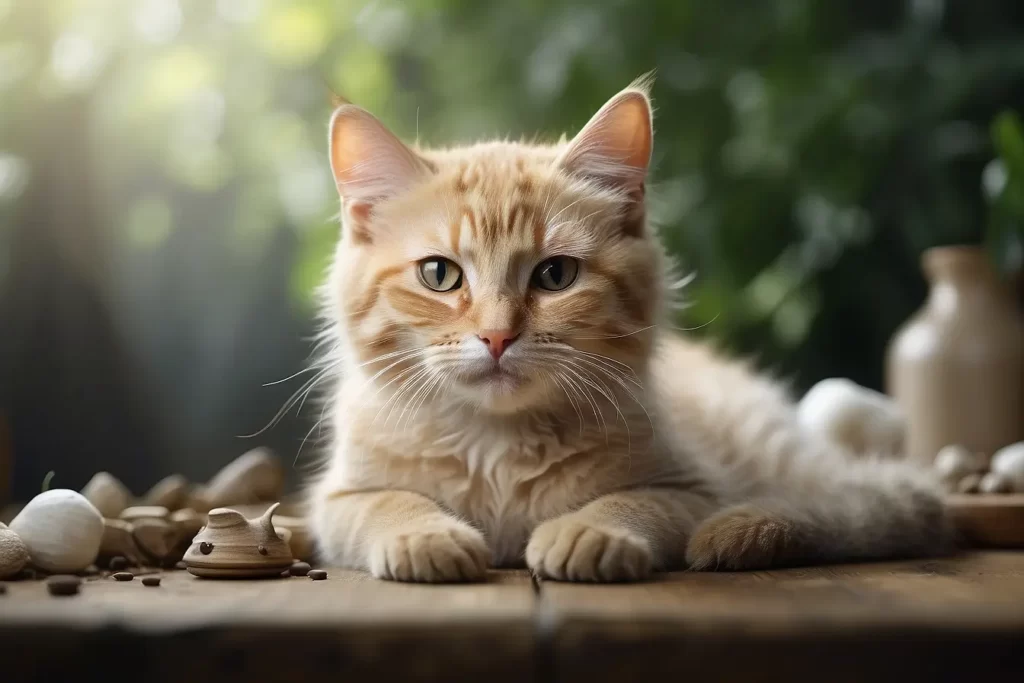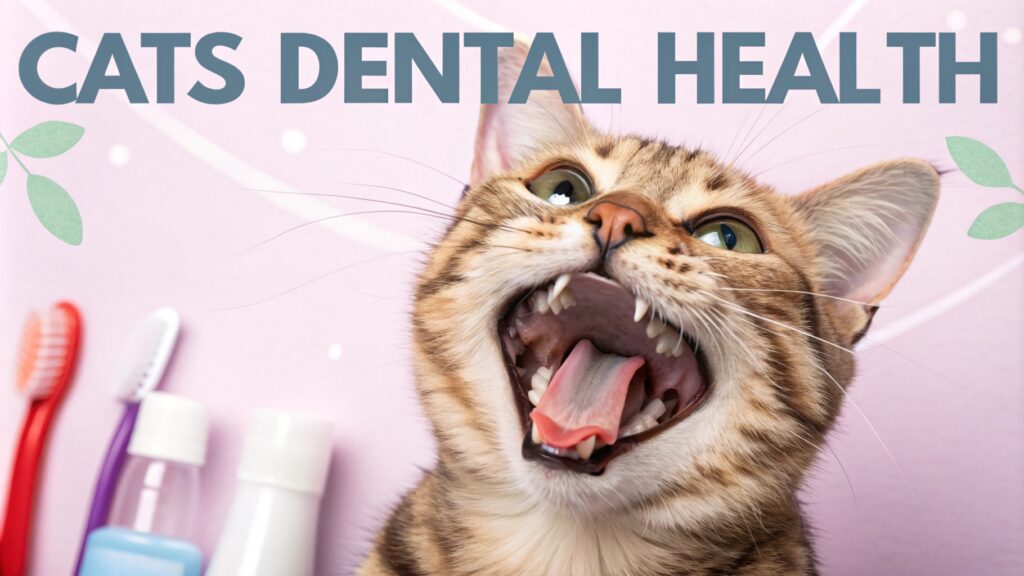Proper dental care is essential for maintaining the overall health and well-being of your feline friend. Understanding the importance of cat dental health and the consequences of poor dental hygiene is crucial in providing the best care for your cat.
Understanding Cat Dental Health
Cat dental health encompasses the well-being of your cat’s teeth, gums, and oral cavity. Like humans, cats are susceptible to dental issues such as plaque buildup, tartar accumulation, gingivitis, and periodontal disease. Without proper care, these conditions can lead to discomfort, pain, and even more severe health problems.
Plaque is a sticky film that forms on the teeth and contains bacteria. Over time, if not removed, plaque can harden into tartar, which is more difficult to eliminate. Tartar buildup can irritate the gums and contribute to the development of gingivitis, an inflammation of the gums.
Left untreated, gingivitis can progress to periodontal disease, which affects the tissues and structures supporting the teeth.
Consequences of Poor Dental Hygiene
Poor dental hygiene in cats can have serious consequences. Besides causing discomfort and pain, untreated dental issues can lead to:
- Tooth Loss: Advanced periodontal disease can result in tooth loss, affecting your cat’s ability to eat and causing further health complications.
- Systemic Infections: Bacteria from oral infections can enter the bloodstream and spread to other organs, potentially causing infections in the heart, liver, and kidneys.
- Bad Breath: Foul-smelling breath is often a sign of dental issues in cats. While it may seem like a minor inconvenience, it can indicate more significant problems that require attention.
- Reduced Quality of Life: Dental pain and discomfort can affect your cat’s overall well-being, leading to changes in appetite, behavior, and overall happiness.
To maintain your cat’s oral health and prevent these potential issues, it is essential to prioritize cat dental care. This includes regular dental check-ups, at-home dental care practices, and the use of appropriate dental products such as cat dental treats.
By understanding the importance of cat dental health and the consequences of poor dental hygiene, you can take proactive steps to ensure your cat’s dental well-being.
In the following sections, we will explore cat dental treats, recommended dental treats for cats, considerations for selecting dental treats, and other oral care practices that can supplement dental treat usage.
Introducing Cat Dental Treats
When it comes to maintaining good oral health for our feline companions, incorporating dental treats into their routine can be a game-changer.
These specially formulated treats are designed to promote oral health in cats by helping to reduce plaque and tartar buildup, freshen your breath, and improve overall dental hygiene.
Benefits of Cat Dental Treats
Cat dental treats offer several benefits that contribute to your cat’s oral health. Some of the key advantages include:
- Plaque and Tartar Control: Dental treats help reduce plaque accumulation on the teeth. The mechanical chewing action of these treats helps remove daily plaque buildup, which is crucial in preventing dental issues such as periodontal disease (WellPets).
- Fresh Breath: Dental treats can help freshen your cat’s breath, making those close cuddles more enjoyable.
- Abrasive Cleaning Action: Many dental treats are larger in size compared to regular kibble, providing more surface area for abrasive cleaning action on the tooth surface. This can aid in removing plaque and tartar buildup (WellPets).
- Enrichment and Reward: Dental treats not only contribute to your cat’s oral health but also serve as a form of enrichment and a way to reward your furry friend.
How Dental Treats Work
Dental treats for cats are specially formulated to promote oral health. They are designed to be chewy or crunchy, which can help mechanically remove plaque and tartar from the teeth.
As your cat chews on the treat, the texture and shape help to scrape away buildup, providing a brushing-like effect. This action can contribute to a cleaner mouth and healthier teeth (Caticles).
It’s important to note that dental treats should be used as part of a comprehensive oral care routine, which may include regular brushing of your cat’s teeth and veterinary dental check-ups. These treats, however, can play a valuable role in daily home care and are an excellent addition to your cat’s dental health regimen.
When selecting dental treats for your cat, be sure to consider the size of the treat to ensure it can be safely chewed. Additionally, opt for treats that have received veterinary approval and are specifically designed for dental health.
Always follow the feeding guidelines provided by the manufacturer to ensure your cat receives the appropriate amount of treats without exceeding their daily calorie intake.
By incorporating dental treats into your cat’s routine, you can help improve their oral health and contribute to their overall well-being.
Remember, a healthy mouth is an essential part of your cat’s overall health. Consult with your veterinarian for personalized recommendations and guidance on the best dental treats for your furry friend’s specific needs.
Choosing the Right Dental Treats

When it comes to maintaining your cat’s dental health, incorporating dental treats into their routine can be a valuable addition. Dental treats are specially formulated to promote oral health in cats, helping to reduce plaque and tartar buildup, freshen breath, and improve overall dental hygiene (Caticles).
In this section, we will explore recommended dental treats for cats and considerations for selecting the right ones.
Recommended Dental Treats for Cats
The Veterinary Oral Health Council (VOHC) provides a list of recommended cat dental treats that have been evaluated for their efficacy in reducing plaque and tartar buildup.
These treats have met the VOHC’s standards and are considered beneficial for promoting optimal oral health in cats (WellPets). Here are some of the recommended dental treats for cats:
| Dental Treat | Key Features |
|---|---|
| Feline Greenies | Nutritionally complete dental treats with a crunchy texture that helps remove plaque and tartar. They are only 2 calories per treat and are recommended to be given daily. They are also VOHC registered. (HealthySmiles Pet Dental) |
| Wellness Cat Treats | Low-calorie treats that contain no meat by-products, artificial flavors, colors, or preservatives. They have a crunchy texture that helps reduce plaque buildup and contain meat as the first ingredient. (HealthySmiles Pet Dental) |
| DentaLife Dental Treats | Specially designed treats with a porous texture that surrounds all sides of your cat’s teeth, helping to scrub away tartar buildup as they bite down. They are VOHC approved. (HealthySmiles Pet Dental) |
| C.E.T. IntelliDent Cat Bites | Crunchy and flavorful treats that work with your cat’s natural chewing action to help reduce plaque and tartar buildup. They are low in calories, use natural flavoring, and contain no artificial preservatives. (HealthySmiles Pet Dental) |
Considerations for Selecting Dental Treats
When choosing dental treats for your cat, there are a few factors to consider:
- Size and Texture: Opt for dental treats that are appropriately sized for your cat’s mouth. Treats with a crunchy texture or a porous surface can help mechanically remove plaque and tartar from the teeth (Caticles).
- Nutritional Content: Ensure that the dental treats you choose are nutritionally balanced and complement your cat’s regular diet. Look for treats that contain high-quality ingredients and are free from artificial flavors, colors, and preservatives.
- VOHC Seal of Approval: Check if the dental treats have received the VOHC seal of approval. This indicates that they have met the standards set by the VOHC for reducing plaque and tartar buildup.
- Your Cat’s Preferences: Consider your cat’s preferences and dietary needs. Some cats may prefer specific flavors or have dietary restrictions that need to be taken into account when selecting dental treats.
While dental treats can be beneficial for your cat’s oral health, they should not be used as a substitute for regular teeth brushing. Brushing your cat’s teeth with cat-specific toothpaste remains the gold standard for maintaining good dental hygiene (Caticles).
It is always recommended to consult with your veterinarian before introducing any new dental treats or products into your cat’s routine, as they can provide personalized recommendations based on your cat’s specific needs and oral health condition.
By choosing the right dental treats and incorporating them into your cat’s routine along with other oral care practices, you can help promote healthy teeth and gums for your feline friend.
Incorporating Dental Treats into Your Cat’s Routine
Establishing a Dental Care Routine
Establishing a dental care routine for your cat is essential for maintaining their oral health. Regular brushing of your cat’s teeth is considered the gold standard for dental care, but incorporating dental treats into their routine can provide additional benefits.
Dental treats are specially formulated to promote oral health in cats, helping to reduce plaque and tartar buildup, freshen breath, and improve overall dental hygiene (Caticles).
To establish a dental care routine with dental treats, consider the following steps:
- Introduce dental treats gradually: Start by offering small amounts of dental treats to gauge your cat’s interest and acceptance. Allow them to get used to the taste and texture gradually. It may take some time for your cat to adjust to new threats.
- Choose dental treats designed for cats: Look for dental treats that are specifically formulated for cats. These treats are often larger than regular kibble, providing more surface area for abrasive cleaning action on the tooth surface (WellPets). Some popular dental treat brands for cats include Feline Greenies, Wellness Cat Treats, DentaLife, and C.E.T. IntelliDent Cat Bites (HealthySmiles Pet Dental). Consult with your veterinarian to find the most suitable dental treatment option for your cat’s specific needs.
- Offer dental treats as a reward: Use dental treats as a positive reinforcement tool during your cat’s dental care routine. Reward them with a dental treat after brushing their teeth or as a treat throughout the day. This helps create a positive association with dental care.
- Monitor your cat’s response: Observe how your cat responds to the dental treats. If you notice any adverse reactions or digestive issues, discontinue use and consult with your veterinarian.
Feeding Guidelines for Dental Treats
When incorporating dental treats into your cat’s routine, it’s important to follow the recommended feeding guidelines to ensure they receive the maximum benefit without excessive calorie intake. Overfeeding dental treats may lead to weight gain and other health issues.
Here are some general feeding guidelines for dental treats:
- Read the package instructions: Carefully read and follow the feeding guidelines provided by the manufacturer on the packaging of the dental treats. These guidelines are typically based on your cat’s weight and can help you determine the appropriate serving size.
- Limit the number of treats: Dental treats should be given in moderation. Follow the recommended daily serving size to avoid overfeeding. Keep in mind that dental treats are not a substitute for a balanced diet, and they should be included as part of your cat’s overall nutrition plan.
- Supervise treat time: When giving dental treats, it’s important to supervise your cat to ensure they are chewing and swallowing them properly. Avoid leaving treats unattended, as they may pose a choking hazard.
- Consult with your veterinarian: If you have any concerns about the appropriate feeding guidelines for your cat or if your cat has specific dietary restrictions, consult with your veterinarian for personalized recommendations.
By establishing a dental care routine and incorporating dental treats into your cat’s daily regimen, you can contribute to their overall oral health.
Remember to always prioritize your cat’s well-being and consult with your veterinarian for professional advice tailored to your cat’s individual needs.
Supplementing Dental Treats with Other Oral Care Practices
While cat dental treats can contribute to maintaining good oral health in cats, they should be supplemented with other oral care practices to ensure comprehensive dental hygiene. Two important practices to consider are regular brushing of your cat’s teeth and veterinary dental check-ups.
Regular Brushing of Your Cat’s Teeth
Brushing your cat’s teeth is considered the gold standard for maintaining good dental hygiene in cats. Ideally, you should aim to brush your cat’s teeth at least every other day to effectively remove plaque and prevent dental issues.
Brushing helps to eliminate food particles and bacteria that can accumulate in your cat’s mouth, leading to dental problems such as tartar buildup, gum disease, and tooth decay.
To brush your cat’s teeth:
- Choose a cat-specific toothbrush that is soft and appropriately sized for your cat’s mouth.
- Use a cat-specific toothpaste that is safe for ingestion and appealing to your cat’s taste.
- Introduce tooth brushing gradually, starting with short sessions and gradually increasing the duration as your cat becomes more comfortable.
- Gently lift your cat’s lips to expose the teeth and gums.
- Brush in gentle circular motions, targeting both the outer and inner surfaces of the teeth.
- Pay extra attention to the back molars, as they are more prone to plaque accumulation.
- Reward your cat with praise and treats after each successful brushing session.
Remember to never use human toothpaste or forcefully restrain your cat during brushing, as this can cause stress and potentially harm your cat.
If your cat is resistant to tooth brushing, consult with your veterinarian for alternative options or techniques.
Veterinary Dental Check-ups
In addition to regular brushing, regular dental check-ups with a veterinarian are essential for your cat’s oral health.
A veterinarian can assess the condition of your cat’s teeth, gums, and overall oral health. They can identify any dental issues early on and provide appropriate treatment or recommendations.
During a dental check-up, your veterinarian may perform the following:
- A thorough examination of your cat’s mouth, teeth, and gums.
- Dental cleaning, which involves scaling to remove tartar and plaque buildup.
- Polishing the teeth to smooth the surfaces and reduce the risk of future plaque accumulation.
- X-rays to evaluate the health of the tooth roots and jawbone.
Depending on your cat’s specific needs, the veterinarian may recommend additional treatments, such as extractions or specialized dental procedures.
Regular dental check-ups, typically recommended twice a year, are crucial for maintaining your cat’s oral health. These visits allow for early detection and intervention, preventing the progression of dental issues that can negatively impact your cat’s overall well-being.
It’s important to consult with your veterinarian before introducing any new dental treats or products into your cat’s routine. They can provide personalized recommendations based on your cat’s specific needs and oral health condition.
Remember, while dental treats can be beneficial, they should not be used as a substitute for regular teeth brushing and professional dental care.
By incorporating regular tooth brushing and veterinary dental check-ups into your cat’s oral care routine, along with the use of dental treats, you can help ensure optimal dental health for your feline companion.
Debunking Myths about Cat Dental Treats
When it comes to cat dental care, dental treats are often a popular choice among cat owners. These treats are specially formulated to promote oral health in cats by reducing plaque and tartar buildup, freshening breath, and improving overall dental hygiene (Caticles).
However, there are some misconceptions surrounding the effectiveness and limitations of these treats. Let’s debunk these myths and shed light on the truth.
Effectiveness of Dental Treats
One common myth is that dental treats alone can completely replace regular teeth brushing for cats. While dental treats can be beneficial for oral health, they should not be used as a substitute for regular teeth brushing.
Brushing your cat’s teeth with cat-specific toothpaste is still the gold standard for maintaining good dental hygiene (Caticles).
Dental treats for cats are designed to provide mechanical cleaning action. Some treats are designed to be chewy or crunchy, which can help remove plaque and tartar from the teeth. However, it’s important to note that the effectiveness of dental treats varies.
To ensure their efficacy in reducing plaque and tartar, look for the Veterinary Oral Health Council (VOHC) seal of approval on cat dental treats. The VOHC evaluates pet dental products, including dental treats, to determine their effectiveness in reducing plaque and tartar buildup (Caticles).
While dental treats can contribute to maintaining oral health, they should be part of a comprehensive dental care routine that includes regular brushing and professional dental cleanings.
Regular at-home brushing and twice-yearly professional cat dental cleanings are highly recommended for optimal oral health (HealthySmiles Pet Dental).
Limitations of Dental Treats
Another myth is that dental treats are effective for all teeth in a cat’s mouth. Cats have a total of 30 adult teeth that are primarily sharp and pointed, lacking a flat occlusal surface. Their teeth are designed for killing and propelling prey to the back of the mouth (Wellpets).
Dental treats tend to be larger than kibble, providing more surface area for abrasive cleaning action on the tooth surface. However, it’s important to note that dental diets and treats may not be as beneficial for the incisor or canine teeth, which have different functions (Wellpets).
It’s also essential to recognize that dental treats are not a substitute for professional dental care. Plaque accumulation can occur rapidly after a professional cleaning, so it’s important to maintain oral hygiene in cats through daily tooth brushing, oral rinses, and dental treats.
Regular veterinary check-ups and professional dental cleanings are crucial for addressing any underlying dental issues and maintaining optimal oral health (Wellpets).
In conclusion, while dental treats can be a valuable addition to a cat’s dental care routine, they should not replace regular teeth brushing and professional dental cleanings.
It’s important to consult with your veterinarian before introducing any new dental treats or products into your cat’s routine, as they can provide personalized recommendations based on your cat’s specific needs and oral health condition (Caticles).
By combining dental treats with regular brushing and professional care, you can ensure your cat’s dental health remains in excellent condition.
Consultation with a Veterinarian
When it comes to maintaining your cat’s dental health, it is essential to seek professional advice from a veterinarian. They can provide expert guidance and personalized recommendations based on your cat’s specific needs and oral health condition.
Consultation with a veterinarian ensures that you are taking the most appropriate steps to support your cat’s dental care.
Professional Advice for Your Cat’s Dental Health
A veterinarian is a valuable resource for understanding and addressing your cat’s dental health. They possess the knowledge and expertise to assess the condition of your cat’s teeth, identify any potential problems, and recommend appropriate treatments or preventive measures.
Regular check-ups with a veterinarian allow for early detection and intervention, preventing the progression of dental issues.
In addition to dental examinations, a veterinarian can provide professional teeth cleanings for your cat. These cleanings involve the removal of plaque and tartar build-up, which cannot be effectively addressed through at-home care alone. Professional cleanings help maintain optimal oral hygiene and prevent dental diseases.
Personalized Recommendations for Your Cat
Each cat is unique, and their dental care needs may vary. A veterinarian can provide personalized recommendations tailored to your cat’s specific requirements.
They may suggest specific dental treatment brands that are suitable for your cat’s oral health condition or advise against certain types of treats that may not be beneficial.
Furthermore, a veterinarian can guide you on the best techniques for brushing your cat’s teeth and recommend suitable toothbrushes and toothpaste. They may also provide insights into other oral care practices that can supplement the use of dental treats, such as rinses or gels.
By consulting with a veterinarian, you can establish a comprehensive dental care plan that takes into account your cat’s individual needs and ensures the best possible oral health outcomes.
Remember, dental treats are not a substitute for regular brushing and professional veterinary dental check-ups. They can be a helpful addition to your cat’s dental care routine, but it is important to follow the advice and recommendations of a qualified veterinarian.
Together with professional guidance and your commitment to regular dental care, you can help transform your cat’s dental health and keep their teeth and gums in excellent condition.



